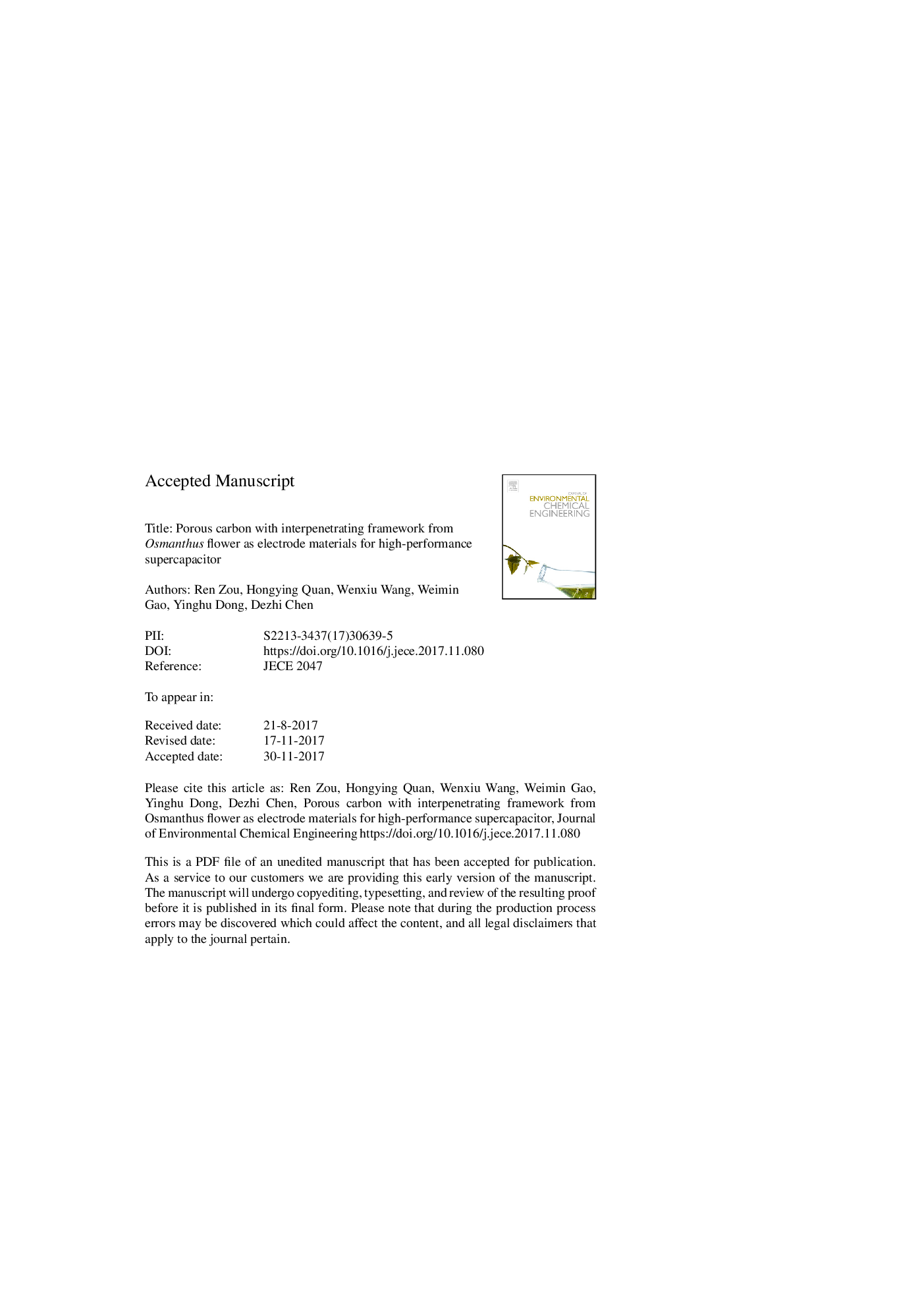| Article ID | Journal | Published Year | Pages | File Type |
|---|---|---|---|---|
| 6664083 | Journal of Environmental Chemical Engineering | 2018 | 27 Pages |
Abstract
Series of porous carbons are prepared from Osmanthus flower by simple hydrothermal carbonization followed by KOH activation. The structure and morphology of the as-prepared Osmanthus flower-derived porous carbon materials (OC) were investigated by X-ray diffraction, Raman spectrum, N2 adsorption/desorption isotherm and electron microscopy, respectively. The results indicate that the OC are mainly microporous with 3D interpenetrating framework, and the pore-structure of the OC is associated with the dosage of KOH. As electrode material for supercapacitors, the electrochemical measurements showed that the OC-2 (the weight ratio of KOH/biochar is 2) exhibited better electrochemical performance than other OC samples and reported porous carbon materials, which is mainly due to the higher micropore surface/volume and the interpenetrating framework in the texture of the OC-2. Furthermore, a symmetric supercapacitor assembled by OC-2 can delivered a high energy density of 7.95 W h kgâ1 with a power density of 10 kW kgâ1 at 20 A gâ1, and an excellent cycling stability (a high capacitance retention of 92.9% after 10,000 cycles). The impressive electrochemical performances of OC-2 electrodes demonstrated that the fully utilization of cheap resource acquisition endowed by nature is a good avenue to design and fabricate materials with great promising applications as high-performance energy storage system.
Related Topics
Physical Sciences and Engineering
Chemical Engineering
Chemical Engineering (General)
Authors
Ren Zou, Hongying Quan, Wenxiu Wang, Weimin Gao, Yinghu Dong, Dezhi Chen,
